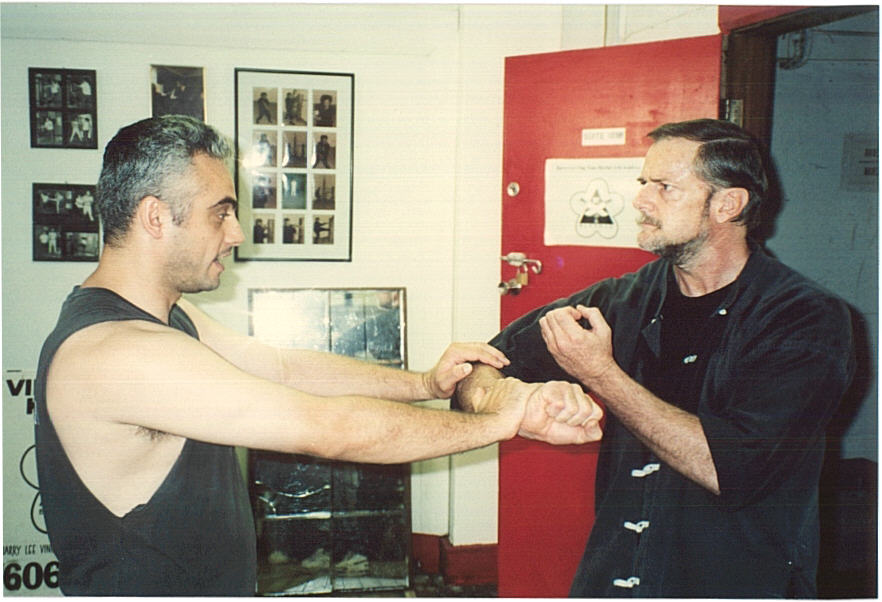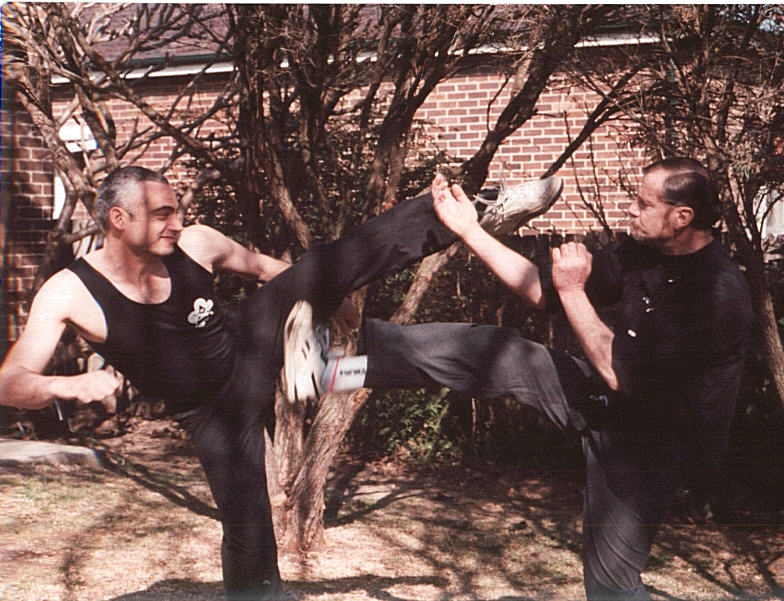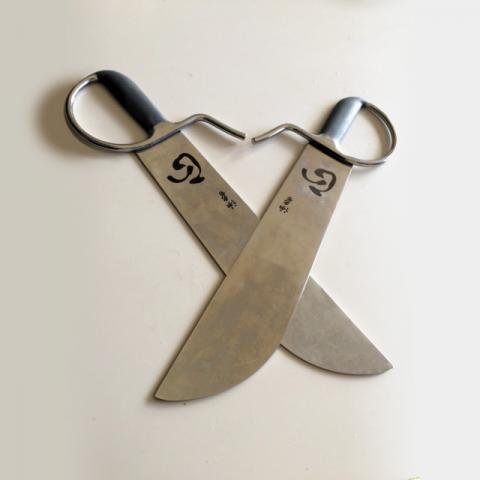by Barry Lee
I sometimes think that trying to teach my students How to fight, is like pushing the proverbial camel through the eye of the proverbial needle.
To be a good ‘fighter’ is more difficult, but to learn How to fight, by applying the Principles and Techniques learned, understood and practised in class, should be somewhat easier.

I say ‘should be’ easier, because it seems that through the years students have come and gone, each with their own approach to training in Ving Tsun.
Some have been natural athletes, some, not so gifted, have simply employed dogged determination and effort, many have trained hard, with enthusiasm and dedication. A few have just wanted to look good, very few just wanted to put in an appearance and to tell their friends they practised a martial art. People in the last two categories don’t last long, so we will disregard these.
All the above, however, at some time in their training process have learned but not understood, have understood but not practised, have practised but not learned or understood the principles and techniques given to them by this time weary and battle worn Sifu.
Consistency is the key to good training in any discipline.
In order to be consistent there are certain things you must do always:
1. Always Listen – really listen to what you are being told, hear what is being said. Visualise it, try to see it happening and concentrate. Don’t wander off mentally. Don’t be an ‘empty-head-nodder.’
2. Always Watch – pay attention to every little detail being shown or demonstrated to you as an individual, or to the class as a whole. If you cannot see, move to where you can, you are not fixed in that position. I am certain the Instructor will be much happier if you can see what he is trying to show you, otherwise he is wasting his time. If you have not watched carefully, how can you practise correctly?, and when it comes time to practise with a fellow student you are disadvantaging him/her as well as yourself.
3. Always Learn – you can only learn if you fully understand what you are listening to, so ask questions, and if you have to, move your body and limbs with the Instructor (as he demonstrates), if this is the only way you can remember with accuracy. Don’t fool yourself into thinking you are learning when really, you have not understood.
4. Always Understand – if you do not fully understand, again, ask questions. Believe me, there is always someone else who does not fully understand but is afraid to ask the question you are about to. Have the courage to face yourself and those around you, for this self-confidence and honesty is a vital ingredient to being able to fight and fight well, let alone, your ability to learn.
5. Always Practise – No amount of understanding, learning, watching, or listening, will make you a good martial artist, unless you are willing to practise and practise hard. Think about what you have been told, remember what you were shown, understand the principles behind the techniques and then practise until the moves become automatic, until you no longer have to think about what you are doing. You must know you are correct, as you do when you lift that knife and fork to your mouth or put that car in gear.
Feel the right movement, feel your body when it is wrong, in technique, in balance, in speed, in power, in accuracy etc, etc.

Don’t think … feel
And remember, if you practise a movement or series of movements incorrectly, you are laying the groundwork for everything that follows to be progressively wrong.
Your mistakes are too easily compounded and you will find it more and more difficult, as time goes on, to correct these mistakes…




`Why?’…because you have spent your precious time practising incorrect movements, when all you had to do in the beginning was to Listen, Watch, Learn and Understand before attempting your daily practice.
As I have said, consistency is the key to good training in any discipline and you must be disciplined in your approach to training.
If you don’t feel well or are tired, try to do at least your basic `Sets’ and ‘punches’. Temper your practice with common sense and don’t ignore what your body tells you, but don’t allow your body to always dictate terms to you. Be mentally strong and you will easily overcome tiredness and many other maladies including boredom and possibly a desire to simply be at the Pub instead of training.
If you want to learn how to fight and win (as my Sifu once said: `How can you defend yourself, unless you can fight and win?’.) then you must practise all your Ving Tsun movements. Not just those you like best or find easiest and you must practise all these movements all the time. This means at every training session, in class, or at home.
You must learn and understand the unique training aspects of Chi Sao and above all, develop the special `feeling’ that only Chi Sao can give you.
This, however, is another topic. Certainly too vast and complex to continue with at this time.
I will say here and now though, that if two men are good natural fighters of almost equal ability, one with Chi Sao experience and the other without. Then the fight will almost certainly go to the man with much Chi Sao practice.
Understand and practise all your Ving Tsun all of the time and you will `fight to win’ … `you will win’…
In closing, I would like to thank all those who attended my Birthday gathering, thanks to those who signed my Card and all those who sent separate messages both for my Birthday and in the form of Get Well wishes.
I would like to say that it is not the physical battles of years past, the adrenalin rush, the crunch of bone. Not the sweat of personal achievement in long hard years of training or being able to overcome seeming impossible sickness and injury. None of these have given as much satisfaction as being able to pass my very hard won knowledge to my students through the years.
The battles of spirit and ego, of co-ordination, memory and determination. The battles of mind over pain and boredom, the argument and discussion.
The smiles of satisfaction and relief at having completed a difficult or repetitive series of movements.
Watching my students and friends progress and achievement in both knowledge and physical skill, year after year, gives me a real pride. And now after my recent trip with your Si-Gung (Wong Shun-Leung) to Europe, London, Hong Kong, I can honestly say we have one of the best standards in Ving Tsun that I have seen anywhere.
It is you people out there, who are the future of Ving Tsun … keep it strong, practise hard and in the correct way… Most of all,
Make Ving Tsun work for you!
